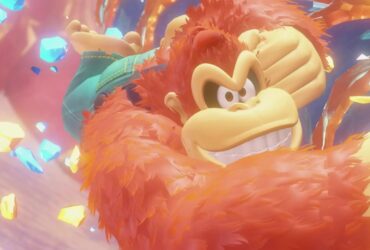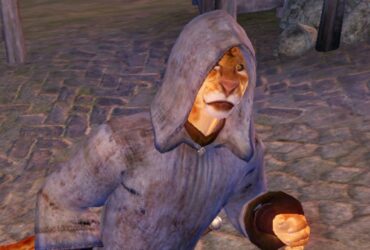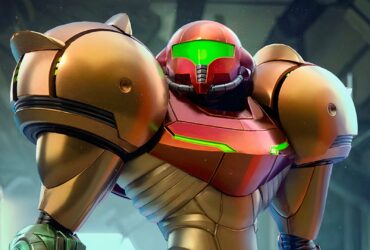Pokemon games never get old because there’s always something new to try—whether it’s building unique teams or taking on fresh challenges. But if playing the same way over and over starts to feel dull, it might be time to shake things up!
One way to do that is with the Monotype Challenge, a fun twist that can make even the oldest Pokemon games feel brand new. By limiting yourself to just one type, you’ll need to think strategically and adapt to new challenges. But how does it work? What are the rules? This guide will break it all down so you can dive into your next adventure!
What Is The Monotype Challenge?
If you’ve grown tired of playing Pokemon games the usual way, the Monotype Challenge (also known as Gym Leader Challenge) offers a fun alternative. While the game itself doesn’t have a built-in mode for this challenge—just like Nuzlocke—you can enforce your own rules to create a new, strategic experience.
As the name suggests, the Monotype Challenge requires you to complete the game using Pokemon of only one specific type. Because this limitation makes battles more challenging, it forces you to think strategically and approach the game in a fresh way.
You can choose any type you like, or, if you prefer a surprise, you can let fate decide! Simply assign numbers to each type and use an online number generator or dice roll to determine your type.
Once selected, you cannot use any Pokemon outside of that type. For example, if you pick the Water type, you are forbidden from catching or using PokEmon of any other type throughout your run.
How Your Experience Will Vary
Your Monotype Challenge experience will change depending on both your chosen type and the game you’re playing. For instance, in FireRed & LeafGreen, choosing Fire-type Pokemon will make the first two Gym battles particularly difficult.
Brock and Misty both have Pokémon that resist Fire attacks and can hit you with super-effective moves. On the flip side, certain Gyms will become significantly easier depending on your chosen type.
How To Build The Best Team For Your Type
Since you’ll be limited to one type, you’ll want to cover your weaknesses as best as possible. This is why dual-type Pokemon are crucial in a Monotype run. For example, if you pick Flying-type, you’ll need to prepare for Ice, Rock, and Electric moves. A well-balanced team might include:
- Charizard to counter Ice-types
- Tropius or Pelipper to counter Rock attacks
- Gligar to nullify Electric-type moves
Additionally, if a Pokemon has multiple possible evolutions, you must evolve it according to your chosen type. For example, if you’re doing a Fighting-type Monotype run, you must evolve Kirlia into Gallade instead of Gardevoir. Otherwise, it wouldn’t be a true Monotype challenge!
While you’re not required to use only dual-type Pokémon, ignoring them can make your run significantly harder. Beyond team composition, TM selection and movesets are key to success in a Monotype Challenge. You should choose Pokemon with a good variety of moves that can help you counter their weaknesses.
Game Choice Affects Difficulty
The Pokemon game you choose for a Monotype Challenge is just as important as the type you select. Some types are much rarer in older games, making certain Monotype runs nearly impossible. For example:
- Dragon-type or Steel-type runs in FireRed & LeafGreen are extremely difficult because you encounter very few of these Pokemon early on. You’d have to wait a long time before getting your first usable Pokémon.
- Types like Bug, Normal, Water, and Flying are widely available in almost all Pokemon games, making for smoother and more enjoyable Monotype runs.
Additionally, some generations completely lack certain types. For instance:
- Gen One (Red, Blue, Yellow) does not have Dark- or Steel-type Pokemon.
- Generations before Gen Six don’t have Fairy-types.
If you play a more recent Pokemon game (Gen Six and beyond), you’ll have more Pokemon choices for your chosen type.
What About Legendary Pokémon?
Some Monotype runs may prevent you from using any Legendary Pokemon at all, depending on your chosen type. This adds another layer of challenge, as you might not have access to some of the most powerful Pokemon in the game.
Trading For An Early Start
If you’re able to trade Pokemon, you can bypass the usual availability restrictions and get a Pokemon of your chosen type early on. This allows you to start your Monotype Challenge sooner instead of waiting to find your first Pokemon of that type.
Mix Monotype & Nuzlocke For The Ultimate Challenge
If a standard Monotype Challenge sounds too easy, why not combine it with a Nuzlocke to ramp up the difficulty?
Core Nuzlocke Rules
- You can only catch the first Pokemon you encounter in each area.
- If a Pokemon faints, it is considered “dead” and must be released or permanently stored.
- You must nickname every Pokemon you catch (optional, but it adds emotional attachment!).
How To Handle Monotype Nuzlocke Rules
Since a Monotype run restricts your available Pokemon, you’ll need to adjust the Nuzlocke rules slightly. Here’s how:
- You must capture the first Pokemon of your chosen type that you encounter in each new area.
- If you fail to catch it, you lose your encounter for that area.
- If your type isn’t available early on, you can play normally until you reach a location where you can obtain a Pokemon of your chosen type. At that point, you must release all non-Monotype Pokemon (including your starter, if necessary).
- Alternatively, you can use tools like Universal Pokemon Randomizer or cheat codes to start with a Pokemon of your chosen type right away.
Example: Rock-type Monotype Nuzlocke
- Start the game as normal.
- Play until you reach an area with Rock-type Pokemon.
- The first Rock-type Pokemon you encounter becomes your starter.
- Release all non-Rock Pokemon, including your original starter.
If you really want to push yourself, consider adding additional challenge rules, such as:
- Level Caps: Your Pokemon cannot exceed the level of the next Gym Leader’s strongest Pokemon.
- Team Size Limits: You can only bring as many Pokemon as the Gym Leader has in battle.
Popular Monotype Choices
While you can pick any type for your Monotype Challenge, some types are much harder due to their limited availability in certain games. Here’s a table to types that are more common and accessible in different Pokemon games:
|
Game Version |
Common Monotype Types |
|---|---|
|
Red / Blue / Yellow |
Water, Normal, Flying, Poison |
|
Gold / Silver / Crystal |
Water, Normal, Flying, Poison, Psychic |
|
Ruby / Sapphire / Emerald |
Water, Flying, Normal, Ground |
|
Fire Red / Leaf Green |
Water, Normal, Flying, Poison |
|
Diamond / Pearl / Platinum |
Water, Normal, Ground, Bug, Flying |
|
Heart Gold / Soul Silver |
Water, Normal, Flying, Poison, Psychic |
|
Black / White |
Grass, Fighting, Water, Normal, Bug |
|
Black 2 / White 2 |
Water, Steel, Normal, Flying, Bug, Dark |
|
X / Y |
Water, Psychic, Grass, Fighting, Dark, Flying, Poison, Electric |
|
Omega Ruby / Alpha Sapphire |
Normal, Water, Flying, Psychic, Grass, Bug |
|
Sun / Moon |
Water, Normal, Flying, Ghost, Dark, Rock |
|
Ultra Sun / Ultra Moon |
Water, Normal, Flying, Dark, Fire, Psychic, Rock |
|
Sword / Shield |
Water, Flying, Electric, Psychic, Ground, Grass, Fighting, Ice |
|
Scarlet / Violet |
Water, Normal, Flying, Ground, Fighting, Grass, Psychic, Bug |
This table doesn’t show every type in every game, but it highlights types with a good variety of available Pokemon.

Next
The 24 Best Non-Legendary Pokemon, Ranked
Legendary Pokemon are legendary for a reason, but there are plenty of non-legendary Pokemon that are just as amazing.
























Leave a Reply